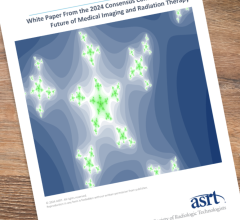
September 9, 2014 — Community Health Centers (CHCs) across the country, which are the medical home for one in 15 people in the United States, are experiencing an overall increase in patients but fewer uninsured patients in 2014, according to a survey conducted by Direct Relief at the National Association of Community Health Centers (NACHC) annual conference last week. ?
The survey respondents collectively serve more than 1.5 million patients from 27 U.S. states. Respondents from states that adopted expanded Medicaid eligibility authorized under the Affordable Care Act indicated a more favorable view of the law's impact than those in non-expansion states.
Direct Relief CEO Thomas Tighe was the keynote speaker at the annual meeting, noting the fundamental though often unheralded leadership role that health centers play within their respective communities and more broadly throughout the health system and for the entire country.
"Health centers are hiding in plain sight as the solution to many of the vexing problems that exist elsewhere in the healthcare system, and you have never lost sight that the whole point is to help people achieve better health," said Tighe to the audience of health center leaders. "Thank you for rejecting the false choice among access, affordability or quality decades ago, and proving beyond question that all three can and must be done together."
Power of Partnership
Direct Relief works with a network of more than 1,200 health centers and community clinics in all 50 states and received NACHC's 2014 "Power of Partnership" award for its various efforts to mobilize private resources to support the nonprofit safety net facilities nationwide, including $450 million in charitable medications and medical supplies and more than $10 million in financial assistance over the past decade.
In presenting the 2014 Power of Partnership Award, Malvise A. Scott, senior VP for partnership and resource development, NACHC, cited Direct Relief's extensive efforts to help Community Health Centers serve their current patient-base of 23 million people — both on an ongoing basis and during emergencies such as Hurricane Sandy. Immediately after the storm hit the East Coast, Direct Relief joined with NACHC to establish a special fund to support patients receiving care at health centers in affected communities.
"It makes us proud that Direct Relief has dedicated the full force of its programs in the United States to ongoing support of community health centers and other safety net providers," said Scott.
For more information: www.DirectRelief.org, www.nachc.org


 July 30, 2024
July 30, 2024 








